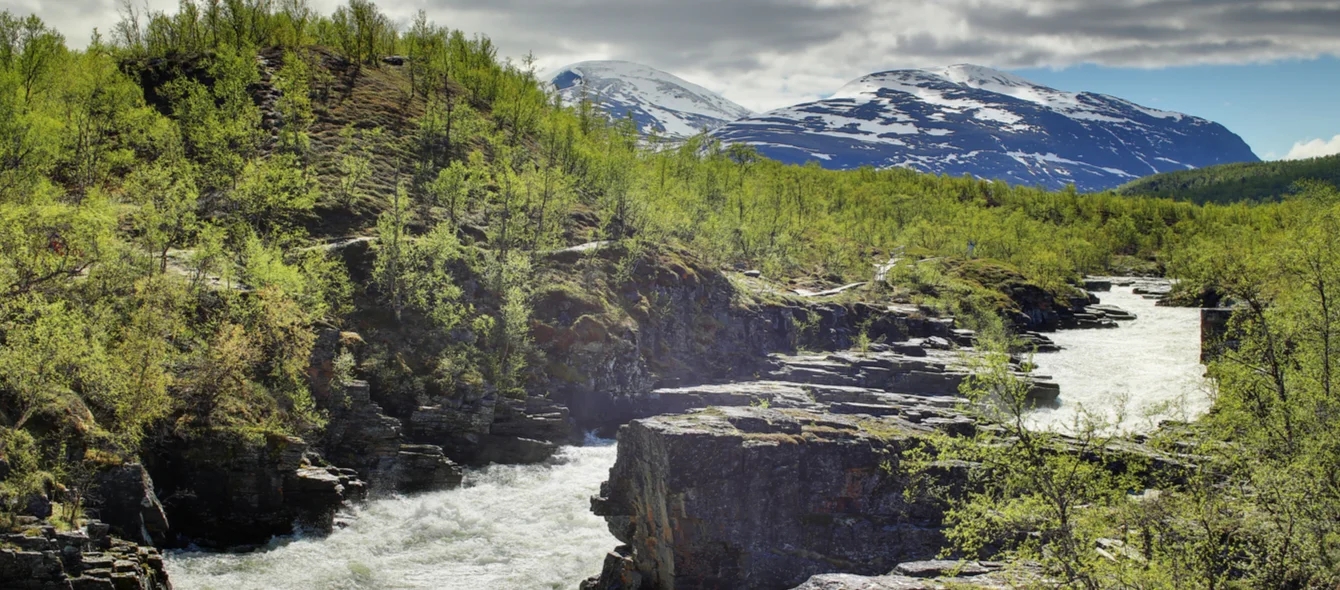Startup Northvolt has been making international headlines since May 2018 – thanks to its plans for extremely sustainable battery production in Sweden. Now the Scandinavians have their sights on the next goal: “Electrification was the first step in reducing carbon dioxide emissions for the transportation industry,” says Carl-Erik Lagercrantz, adding “The next step is to build vehicles from high-quality fossil-free steel.” Lagercrantz is co-founder and CEO of Vargas Holding, a driver of the establishment of Northvolt and one of the company’s largest shareholders. Vargas Holding’s current objective is to invest heavily in green steel production via the recently founded consortium H2 Green Steel.
Water instead of greenhouse gas
Similar to cement manufacturing, emissions from steel production cannot be reduced simply by electrification. After all, coal plays a major role in the chemical process used to convert iron ore to steel.
Companies are testing alternative manufacturing methods all over Europe. Carbon is replaced by hydrogen to extract oxygen from iron ore. This produces H2O instead of CO2 – in other words, water instead of greenhouse gas. Of course, the resultant steel is only truly ‘green’ if its manufacture involves green hydrogen, obtained, for example, by electrolysis using electricity from renewable energy sources.
Mammoth 800 megawatt electrolyser is centrepiece
This is the very type of plant H2 Green Steel intends to build from the ground up. The consortium envisages green steel production beginning as early as 2024. Starting in 2026, H2 Green Steel aims to manufacture 2.5 million metric tons of steel per year, pushing up annual output to a whopping five million metric tons from 2030 onwards. By comparison, smelters in Duisburg, Europe’s biggest steel location, churn out some twelve million metric tons of (conventional) steel every year.
Green hydrogen will be supplied to H2 Green Steel’s plant courtesy of its very own electrolyser, which will cover its entire demand. The envisaged capacity of 800 megawatts (MW) will take H2 Green Steel into an entirely new dimension. So far, electrolysers have operated in the low double-digit megawatts. European energy companies plan to run units rated at around 100 MW by the middle of this decade. The Swedish project is thus one of the biggest green hydrogen ventures in the world.
On board alongside Vargas is Swedish private equity firm Altor owned by Vargas co-founder Harald Mix. Additional partners include Swedish commercial vehicle manufacturer Scania, Hagen-based steel concern Bilstein Group and plant engineers SMS Group from Düsseldorf.
Holistic take on net zero emissions
H2 Green Steel has set out to take a holistic approach to sustainable steel production, declares Maria Persson Gulda, Chief Project Officer and Chief Technical Officer at H2 Green Steel. She explains that, for example, unlike conventional methods, the steel is rolled immediately after production without being cooled, in order to minimise energy consumption.
The waste heat from the plant is channelled into the local district heat network. Moreover, the entire process is constantly optimised by artificial intelligence.
North Sweden – the ideal location?
Selecting a remote area in the north of Sweden was by no means arbitrary: Luleå is connected to the mining town of Kiruna via the Ore Train. The namesake iron mine ranks among the biggest in the world. Required coal supplies as well as iron ore and steel shipping have turned Luleå into the second-largest port on the coast of east Sweden after Stockholm.
Steel has been smelted here since the middle of the past century: “The region is indeed the mining and metal Mecca of Sweden,” says Harald Mix, who forms the Board of Directors of H2 Green Steel together with Vargas CEO Lagercrantz. This explains the workers’ substantial expertise.
Renewable energy as location factor
Mix states that there are further hard factors in favour of the site, in particular the envisaged area in the community of Boden providing enough space. After all, the planned factory will extend over more than a kilometre. In addition, the area has a direct connection to a 400 kilovolt ultra high-tension powerline with which the plant will be connected to the renewable energy sources in the north of Sweden.
A total of 15 hydroelectric power stations produce electricity in Norbotten alone, including seven of the nine largest in Sweden. Markbygden, set to become Europe’s largest onshore wind farm, is being built just short of 100 kilometres to the south. The first construction phase, which is currently underway, is envisaged to have an installed capacity of 963 MW, with the farm’s seven turbines having a combined capacity of 3,600 MW. Current plans have wind and hydroelectric installations generating some 25 terawatt hours of electricity per annum, representing one-sixth of Sweden’s power consumption.
Financing sustainability
According to H2 Green Steel, the first round of financing, to the tune of 50 million euros, is nearly complete. The project is reported to cost 2.5 billion euros. Besides US investment bank Morgan Stanley and France’s Société Générale, the company’s financial advisers also include KfW IPEX-Bank from Germany. Among first-round investors alongside Spotify founder Daniel Ek are IMAS Foundation, which is associated with IKEA, and EU-funded InnoEnergy.
Sweden is not the only country whose steel industry must reduce its carbon dioxide emissions substantially if the world wants to hit its climate targets. In 2018, raw steel production accounted for 5.4 percent of global greenhouse gas emissions. Based on figures from the International Energy Agency (IEA) 75 percent of the sector’s energy consumption was fuelled by coal.
